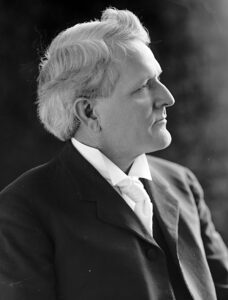About Publications Library Archives
heritagepost.org

Preserving Revolutionary & Civil War History

Preserving Revolutionary & Civil War History

On June 5, 1907, The Scranton Republican reported on the arrival to Washington, D.C., of three companies of Confederate veterans, fresh from the dedication of the recently toppled Jefferson Davis monument in Richmond, Virginia. “This was the first time in history that soldiers of the Confederacy have borne arms in the streets of the nation’s capital,” the paper noted.
“Nearly all of the Tennesseans were attired in Confederate grey. They consisted of two companies of infantry, one from Memphis and the other from Nashville and a cavalry company from Nashville composed entirely of veterans of General N.B. Forrest’s cavalry command. The infantry organizations bore muskets.”
Tennessee Congressman John Wesley Gaines, born right on the eve of war in 1860, headed the march of the former Confederates right to the doors of the White House, where he and the veterans wished to hold a private session with President Theodore Roosevelt. While the site of the veterans in gray was enough to behold, the mission of their meeting with the president was even more curious.
“With them was an old negro, bowed by the weight of years, but bright eyed and interested. He was Whitlock Field, who was on every battlefield upon which the First Tennessee regiment fought in the Civil war. Whitlock was the body servant of Colonel Hume Field, the commander of the regiment.”[ii] Whitlock’s former enslaver, Hume, gained notoriety during the war for an incident in which the then-captain single-handedly killed around twenty U.S. soldiers and gave rise to the contemporarily popular notion that “one Southern man was equal to twenty Federals and that we could whip them with ‘pop guns,’”[iii] as noted by fellow First Tennessean Sam Watkins in his famous war memoir.
“[Whitlock] lives in Pulaski, Tenn., attends every general Confederate reunion and pays his own expenses. The veterans of the First Tennessee made much of the old man. They wanted him to have a special presentation to the president.” Unfortunately for Whitlock and the rest of the group, the president had a prior lunch engagement and was unable to make the meeting. “The Southern visitors were passed along so rapidly that Whitlock did not have a chance to say anything to him.”[iv]
While the inability to meet the president was disappointing enough, matters only continued to worsen and put a damper on the former rebel’s march on Washington. After being passed along from the White House Congressman Gaines continued the parade “with banners flying and in double ranks” to the Capitol building where on arrival at the Peace Monument (ironically enough) were told that without permits issued by the Vice President and the Speaker of the House, the armed visitors would not be permitted on Capitol grounds. Gaines became incensed.

“Do you know who I am, sir? I am John Wesley Gaines, a member of congress from Tennessee, and, sir, I want you to step aside and let these men proceed. I have secured permission for them to bear arms, and they are my guests in this visit to the capitol. They will proceed, sir, to the corridors of the capitol and stack arms beneath the very dome, sir.”[v]
A quick back-and-forth with the officers convinced Gaines in the futility of his argument and he attempted to convince the group to disarm, drop the colors, and enter the capitol as citizens. An agreeable compromise to some, however, many in the group insisted on marching as an organization and it was only after considerable debate that the dissenters capitulated, and the group quickly toured the building. While the lofty goals of the visit of the members of the First Tennessee were largely unmet, their actions were a significantly prominent attempt to display the professed righteousness of their cause. Unfortunately for the former Confederates, much like with the quickly disappearing monuments to that cause, things just didn’t work out. By EJ Murphy – He is a middle and high school social studies teacher in Scranton, Pennsylvania, and tour guide for the Waverly Community House’s Destination Freedom: Underground Railroad Walking Tour.
[i] Levin, Kevin M. Searching for Black Confederates: The Civil War’s Most Persistent Myth. Chapel Hill: University of North Carolina Press, 2019, page 84. [ii] The Scranton Republican, June 5, 1907, page 1. [iii] Watkins, Sam R. Company Aytch or a Side Show of the Big Show: A Memoir of the Civil War. Nashville: Turner Publishing Company, 2011, page 13. [iv] The Scranton Republican, June 5, 1907, page 1. [v] The St. Louis Globe-Democrat, June 5, 1907, page 18.